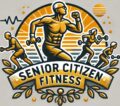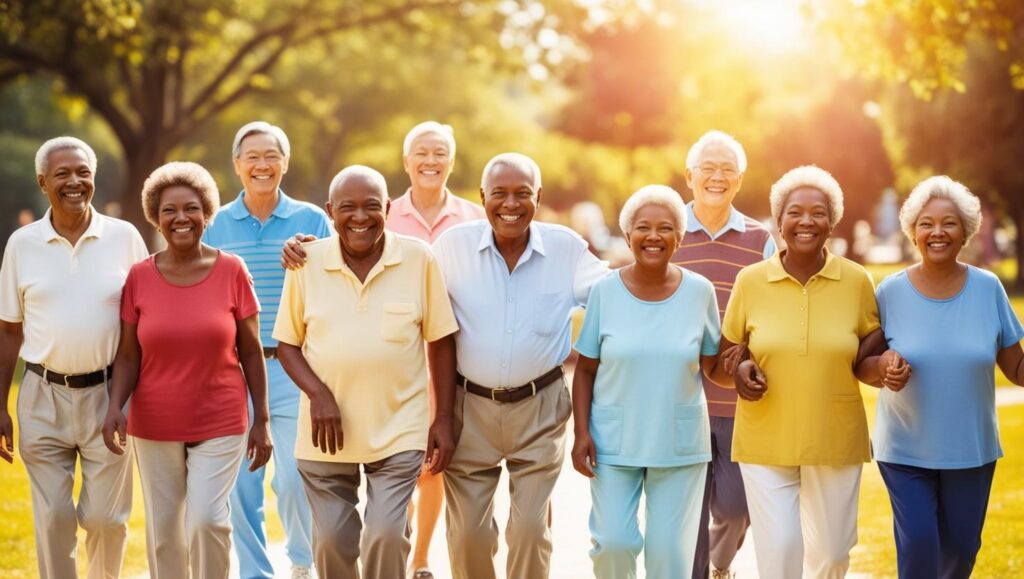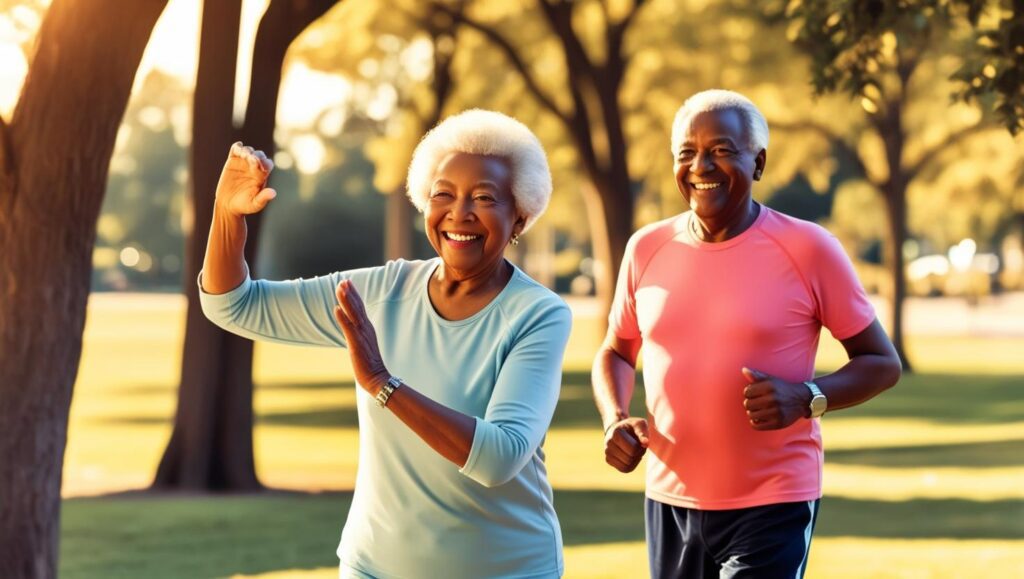Staying Active in Your Golden Years: 10 Effective Exercises for Seniors
Maintaining an active lifestyle as a senior is one of the best ways to boost health, improve mood, and maintain independence. Whether you’re aiming for improved balance, stronger muscles, or better flexibility, there’s an exercise to fit your needs. Let’s explore 10 effective exercises for seniors and how they can be incorporated into daily life.
1. Walking: A Simple Step Towards Fitness
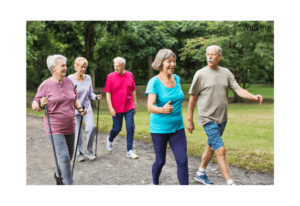
Walking is one of the easiest and most effective exercises for seniors. It’s gentle on the joints, requires no special equipment, and can be done anywhere.
Benefits:
- Improves cardiovascular health.
- Strengthens leg muscles.
- Enhances mood and mental clarity.
Tips for Safe Walking:
- Stick to flat, even surfaces to reduce the risk of tripping.
- Wear supportive, comfortable shoes.
- Use a treadmill if the weather or outdoor conditions aren’t favorable.
Whether it’s a morning stroll around the neighborhood or a brisk walk at the park, walking is a great way to get moving while enjoying fresh air.
2. Swimming and Water Aerobics: Gentle Yet Powerful
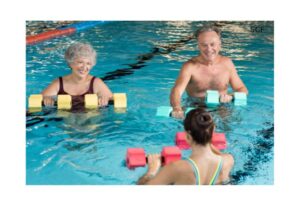
Swimming and water aerobics are perfect for seniors seeking a low-impact workout. The buoyancy of water reduces pressure on the joints, making movement easier.
Benefits:
- Improves flexibility and cardiovascular endurance.
- Alleviates joint pain and stiffness.
- Strengthens muscles through resistance.
Example Exercise:
- Leg Lifts in Water: Stand in waist-high water, hold onto the pool edge, and lift one leg to the side. Repeat for both legs to strengthen hips and thighs.
For seniors dealing with arthritis or joint pain, warm water pools offer extra relief while providing a social and engaging workout.
3. Chair Exercises: Fitness from the Comfort of a Seat
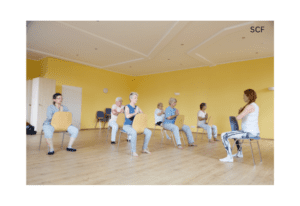
Chair exercises are ideal for seniors with mobility challenges. They allow for safe and effective workouts without the need to stand.
Benefits:
- Builds strength and flexibility.
- Improves circulation.
- Enhances stability while reducing the risk of falls.
Example Exercises:
- Seated Leg Lifts: Sit straight, extend one leg out, hold for a few seconds, and lower it back down. Alternate legs.
- Arm Curls: Use light weights or water bottles to curl your arms upward from your lap, strengthening biceps.
These exercises can easily fit into a daily routine—perfect during TV breaks or quiet mornings.
4. Tai Chi: Moving Meditation
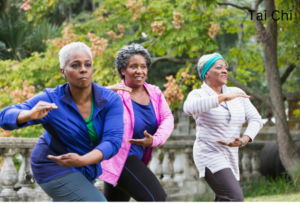
Tai Chi is a graceful exercise that combines slow, flowing movements with deep breathing, offering both physical and mental benefits.
Benefits:
- Improves balance and coordination.
- Reduces stress and anxiety.
- Enhances flexibility and strength.
Getting Started:
Join an online or in-person class tailored to seniors, or follow beginner-friendly instructional videos. Movements like “Wave Hands Like Clouds” or “Golden Rooster Stands on One Leg” improve balance and mindfulness.
5. Yoga: Strength, Flexibility, and Relaxation
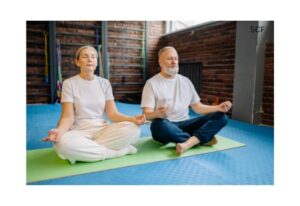
Yoga is a versatile practice that focuses on flexibility, strength, and relaxation. Gentle yoga poses help seniors improve posture and reduce muscle tension.
Benefits:
- Enhances flexibility and range of motion.
- Improves balance and stability.
- Promotes relaxation and stress relief.
Example Poses:
- Seated Cat-Cow Stretch: Sit tall on a chair, arch your back slightly (Cow Pose), then round it forward (Cat Pose) to stretch the spine.
- Tree Pose: Stand tall, place one foot on the opposite ankle or calf, and balance while holding onto a chair if needed.
Yoga can be modified to suit all levels, ensuring comfort and safety during practice.
6. Pilates: Core Strength and Stability
Pilates focuses on core muscles, helping seniors maintain balance and posture. It’s gentle yet effective, making it suitable for older adults.
Benefits:
- Strengthens core and back muscles.
- Improves stability and balance.
- Enhances coordination.
Example Exercises:
- Pelvic Tilts: Lie on your back with knees bent, tilt your pelvis upward slightly, hold, and release.
- Seated Arm Circles: Sit straight and extend your arms to the sides, making small circles to strengthen shoulders.
Adding Pilates to your routine can improve mobility and reduce the risk of falls.
7. Resistance Band Training: Strength Without Strain
Resistance bands are lightweight, portable, and provide an excellent way to build muscle without heavy weights.
Benefits:
- Builds muscle strength.
- Improves joint flexibility.
- Enhances coordination.
Example Exercises:
- Seated Row: Sit on a chair, loop the band around your feet, and pull the ends toward you as if rowing.
- Bicep Curls: Step on the band and curl your arms upward to strengthen your biceps.
Resistance bands offer an adaptable and safe workout for seniors of all fitness levels.
8. Light Weight Training: Maintaining Strength
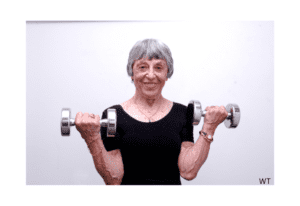
Using light weights helps maintain muscle mass and bone density, essential for staying independent.
Benefits:
- Increases functional strength for daily tasks.
- Improves bone health.
- Boosts metabolism.
Example Exercises:
- Overhead Press: Hold light dumbbells and push them upward from shoulder height.
- Side Arm Raises: Lift light weights outward to shoulder height, then lower slowly.
Always start with light weights and focus on proper form to avoid injury.
9. Stationary Cycling: Low-Impact Cardio
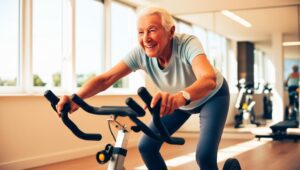
Stationary bikes provide a joint-friendly way to get your heart pumping and improve leg strength.
Benefits:
- Enhances cardiovascular fitness.
- Strengthens leg muscles.
- Low risk of joint strain.
Tips:
- Opt for a recumbent bike for added back support.
- Begin with short sessions and gradually increase duration.
Cycling is a safe and effective way to improve endurance and maintain an active lifestyle.
10. Stretching and Balance Exercises: Keeping Mobility and Stability
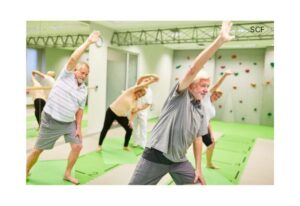
Stretching and balance exercises help seniors stay mobile and prevent falls. They’re simple yet highly effective.
Benefits:
- Improves flexibility and posture.
- Enhances balance and coordination.
- Reduces stiffness and risk of injury.
Example Exercises:
- Toe Touches: Stand or sit, reach toward your toes, and hold for a gentle stretch.
- Heel-to-Toe Walk: Walk in a straight line, placing one foot directly in front of the other to improve balance.
Incorporate these exercises into your daily routine to maintain agility and confidence.
Conclusion: Embrace Fitness for a Healthier Life
Staying active as a senior doesn’t have to be overwhelming. With these 10 effective exercises—ranging from walking and chair exercises to yoga and resistance training—you can create a well-rounded routine that fits your lifestyle and abilities.
The key is consistency and choosing activities you enjoy. Whether you’re taking a stroll in the park, stretching with a yoga video, or cycling at home, every movement counts. Staying fit not only improves your physical health but also enhances your mood and overall quality of life.
So, lace up those shoes, grab a resistance band, or roll out your yoga mat—it’s time to embrace the benefits of an active lifestyle and enjoy your golden years to the fullest!
